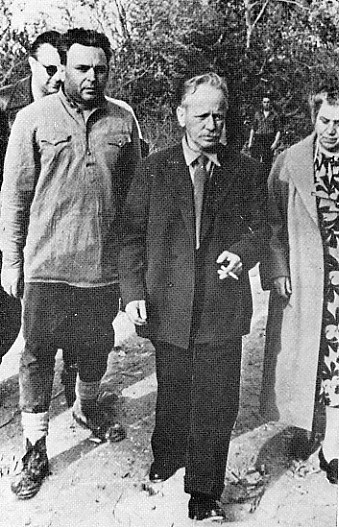presents:
THE MAKING OF "FATE OF A MAN"
Transferring Sholokhov's story to film
by
Vladimir Monakhov
Cinematographer
M.A. Sholokhov's 107th Birthday, 24 May 2012. |
presents:
THE MAKING OF "FATE OF A MAN"
Transferring Sholokhov's story to film
by
Vladimir Monakhov
Cinematographer
from 107 Years of Sholokhov, a SovLit.net elebration in honor of
M.A. Sholokhov's 107th Birthday, 24 May 2012.
 M.A. Sholokhov on the set of "The Fate of a Man", 1959 |
|
107 Years of Sholokhov |
